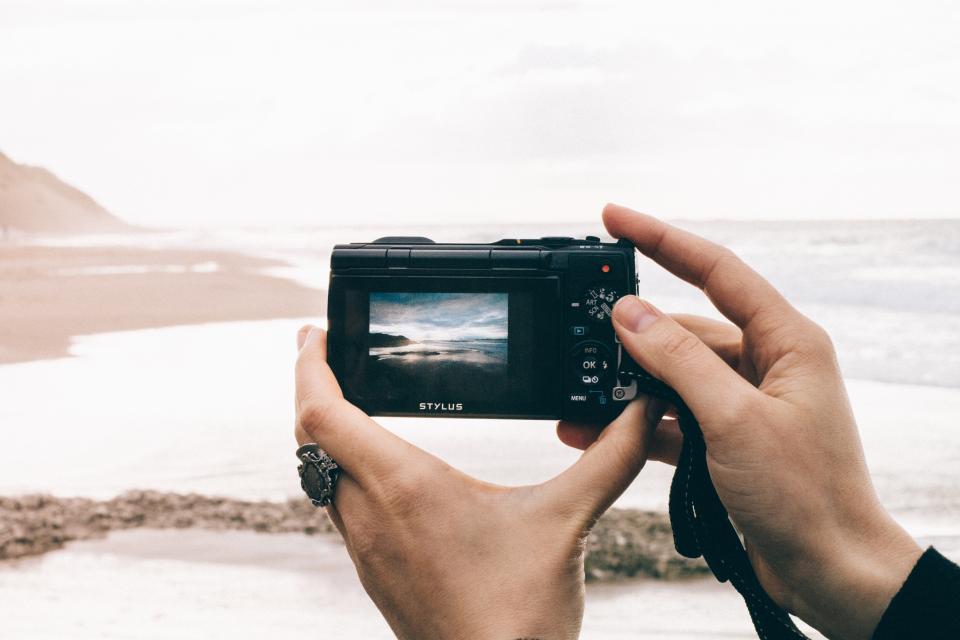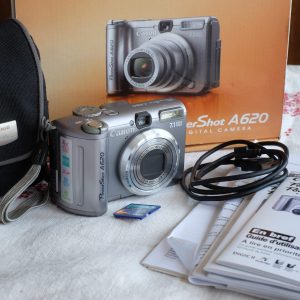What Are
Digicams
How do they stand out
from other cameras?

During the late 1990s and early 2000s, it became increasingly evident that digital cameras were becoming a permanent fixture in the world of photography, while film cameras were becoming a niche. Ironically, during this time, some of the cult classic film point-and-shoot cameras were at their cheapest.
Digital camera technology was young, but it was improving rapidly, and once manufacturers were able to simplify the cameras, making them user-friendly, it was a game-changer. Compact, digital point-and-shoot cameras became the go-to for the average consumer, for everyday snapshots, family vacations, and parties. These cameras were affordable and easy to use, making it simple for users to take photos, immediately see the results, and share them with friends and family.
For many years, these cheap point-and-shoot cameras were some of the most popular models on the market, selling in large numbers. As a result, even now, 15 years later, you can find hundreds of these cameras from this era in Goodwill bins.
Around 2005, cameras were being integrated into smartphones, which were rapidly advancing. Within a few years, smartphone cameras became much more common and produced better quality photos. With the rise of smartphone cameras, digital point-and-shoot cameras declined in popularity, and although still being manufactured, they will never again reach the heights of the digicam era, where almost every household had one.
“Fantastic Experience As Always. Highly Recommend!”
Melisa Roberts
“Amazing Shop! best quality products you can find”
John Smith
CCD or CMOS Sensors ?
Although nostalgia is a significant factor in the resurgence of digicams, it’s not just about nostalgia for the cameras themselves; it’s also about the distinctive look of the images they produce.
In many cases, the reason for this difference is straightforward: the camera uses a different type of sensor than modern digital cameras. Early digicam models used CCD sensors, while later models used CMOS sensors, which are still common today.
The scientific differences between these sensors are complex and dense. If you want to know the details, check out this article published on PetaPixel, which does a better job of explaining the differences than we can.
In practical terms, each type of sensor has its pros and cons, and they each produce images with a different look. Neither is inherently better or worse than the other; it’s a matter of personal preference.
Tips to Keep in Mind When Purchasing a Vintage Digital Camera
Things to Consider When Purchasing a Digicam If you’re interested in experimenting with cheap, vintage digital cameras, there are plenty of options available. Here are some factors to consider when deciding which model to purchase:
- Memory Card – Some digicam models have their own unique memory cards. The best option is to find a camera that uses SD cards, which are still widely available. If the camera uses an uncommon memory card, it’s best to find a camera that comes with one included.
- Battery/Charger – Does the camera come with a battery and/or a charger? Some models use standard AAA batteries, while others require specific batteries and a separate charger. Check what’s included and the availability of missing parts if needed.
- Megapixels – The number of megapixels isn’t always a critical factor, but it can be important to some buyers.
- Type of Sensor – The type of sensor can impact the look of the images produced. CCD sensors were commonly used in earlier models, while later models used CMOS sensors. Research the model to determine which type it uses.
- Size – For convenience, we recommend compact options with a flush lens when closed.
- Focal Length/Zoom – The majority of digicams have a similar zoom range, typically around 28mm to 100mm. Keep in mind that focal lengths are not equivalent to those of 35mm film or full-frame cameras due to crop factor.
- Maximum Aperture – Lower maximum apertures allow for greater background separation. Some digicams have apertures as low as f/1.8.
- Shooting Modes – A camera with some level of manual control is preferred, including shutter priority, aperture priority, manual exposure modes, and exposure compensation.
It may be difficult to find all this information when you consider cameras in person, so if you buy online, be sure to do your research and google all specifications that are not listed or trust Digicam Love for you Offer tested and complete devices, ready to take photos!

